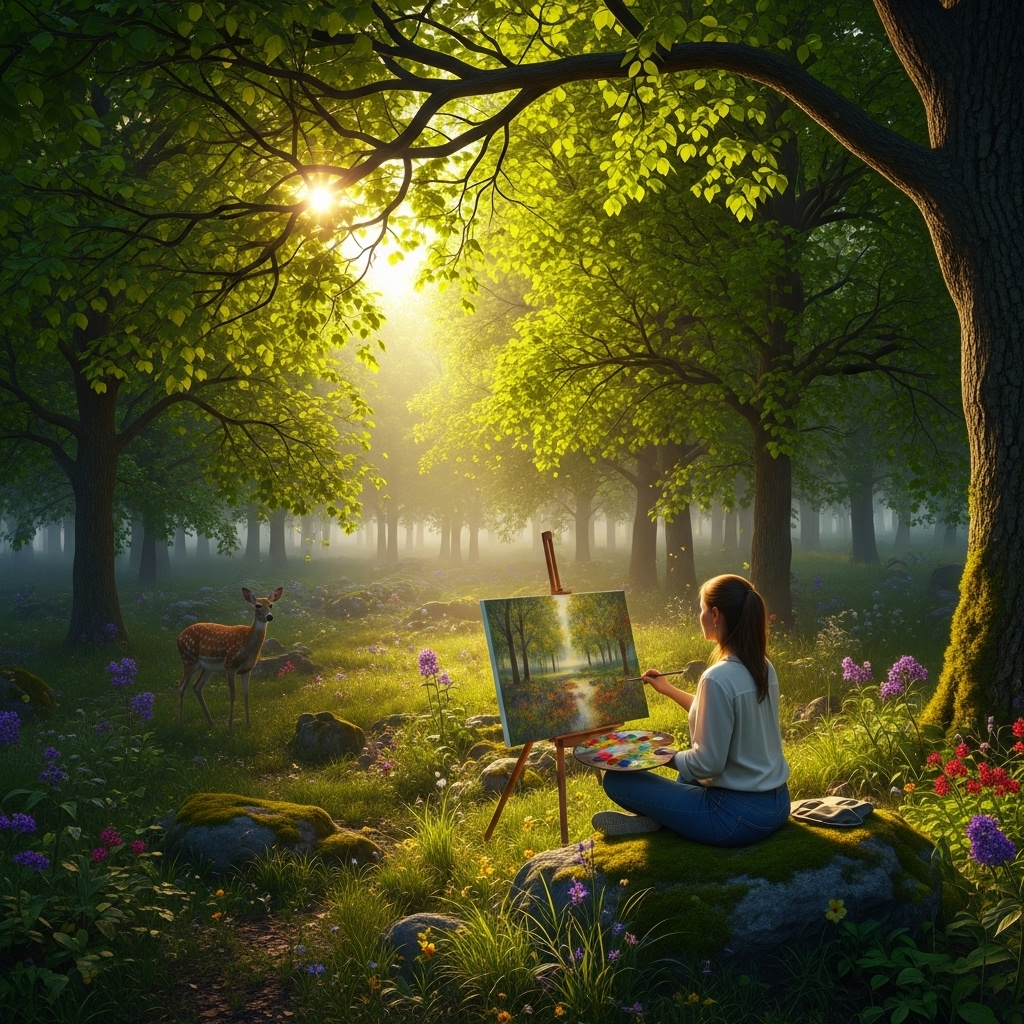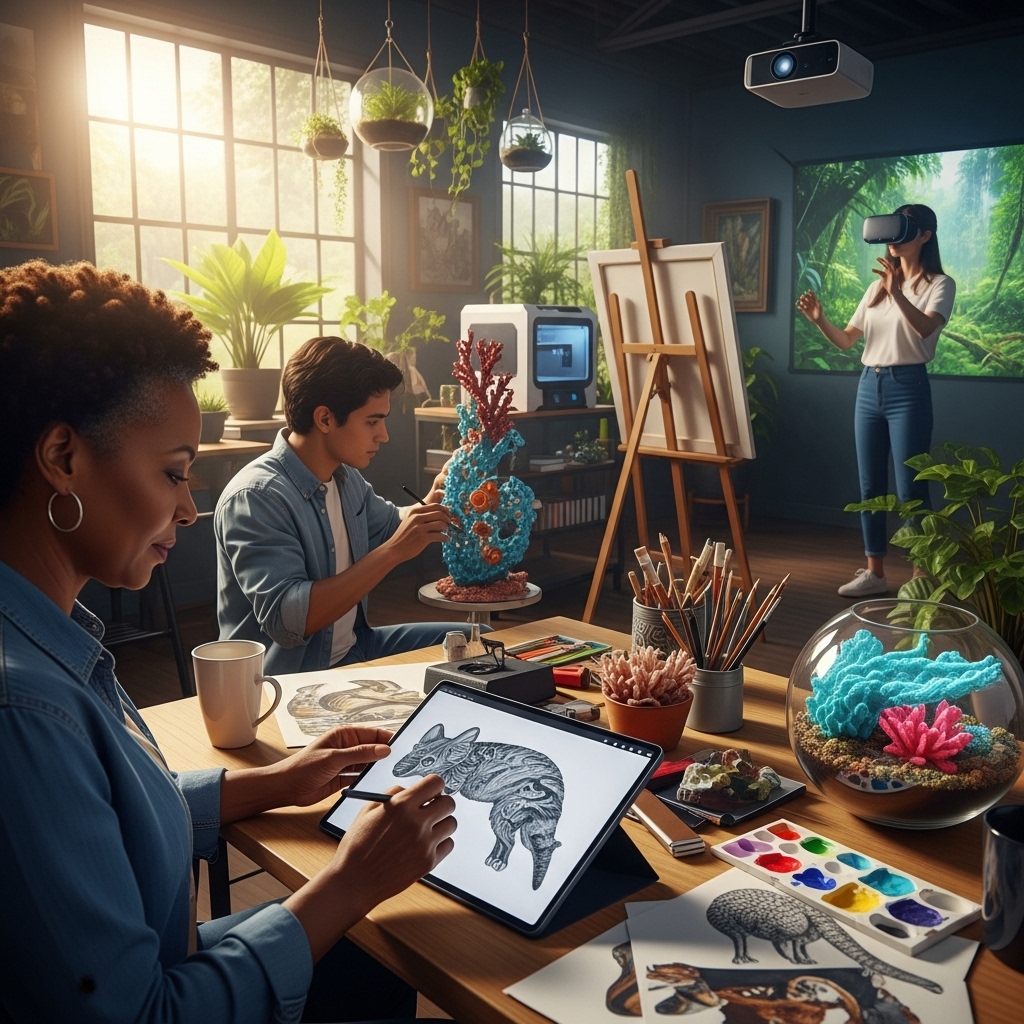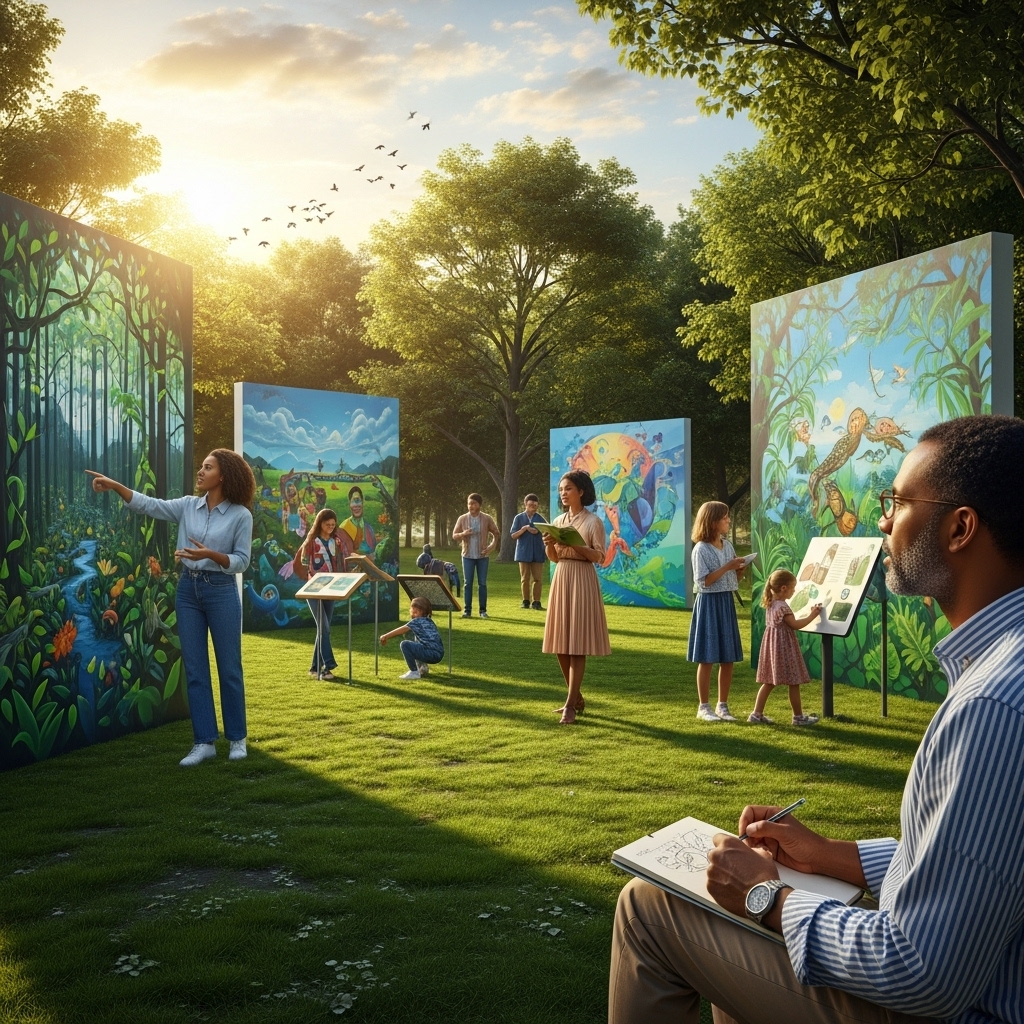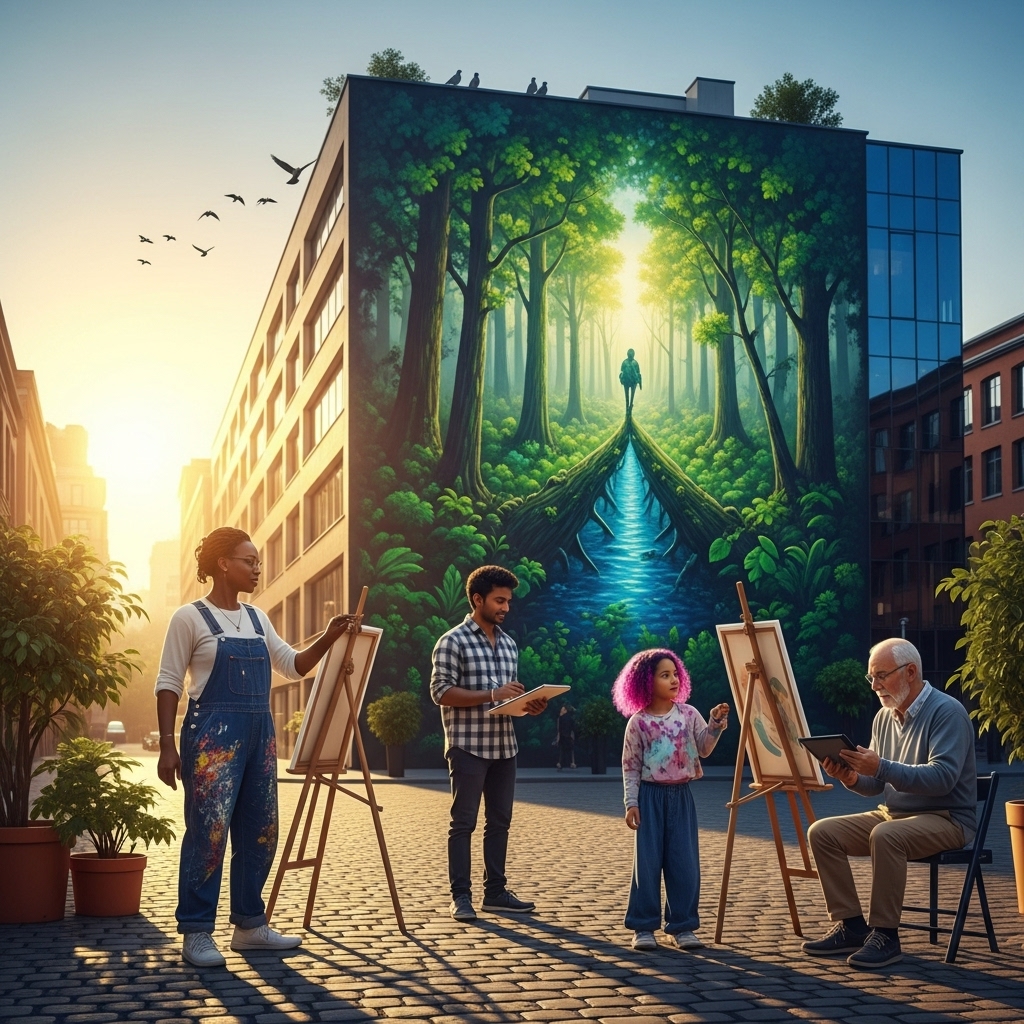The interplay between humans and nature has inspired countless artists throughout history. In this article, I will explore the enchanting world of conservation-themed drawings, showcasing how artists celebrate both people and the natural world through their creative expressions.
The Connection Between Art and Nature

When I think about the relationship between art and nature, I’m reminded of how deeply interconnected our lives are with the environment. Each stroke of a pencil or brush can capture the essence of our surroundings, breathe life into landscapes, and give a voice to the silent beauty of flora and fauna. This connection is particularly powerful in the realm of conservation art, where artists not only express their love for the natural world but also advocate for its preservation.
As I delve into this fascinating topic, I find myself reflecting on the various forms that conservation art can take. From intricate pencil sketches of endangered species to vibrant watercolor landscapes, every piece tells a story. These stories are often rooted in personal experiences, highlighting the artist’s journey and their emotional ties to the earth. I can’t help but feel a sense of responsibility when I consider how art can be a catalyst for change.
Art as a Tool for Awareness
One of the most compelling aspects of conservation drawings is their ability to raise awareness about environmental issues. I’ve seen firsthand how a single illustration can spark a conversation, provoke thought, and inspire action. Artists often use their work to shed light on critical topics such as climate change, habitat destruction, and endangered species. When I examine these pieces, I can sense the urgency behind each line and color choice.
For instance, I remember coming across a stunning drawing of a polar bear on a shrinking ice cap. The artist painstakingly rendered the bear with such detail that I could feel its isolation and vulnerability. This piece not only captured the bear’s beauty but also highlighted the stark reality of its diminishing habitat. It moved me to consider my own role in the broader narrative of conservation and the impact of my actions on the planet.
Emotional Resonance in Drawings
What strikes me about conservation drawings is their ability to evoke emotions. Whether it’s joy, sadness, or even anger, art has a unique power to resonate with viewers on a personal level. I’ve often found myself reflecting on my own experiences in nature when I encounter art that mirrors those sentiments. For example, a drawing depicting a lush forest can transport me back to a cherished childhood memory, reminding me of the simple joys of exploring the outdoors.
Artists understand this emotional connection and often incorporate their personal narratives into their work. I’ve noticed that many conservation artists share their own interactions with nature, whether it’s a hike through a national park or a moment of tranquility by a river. These stories add depth to their drawings, transforming them from mere representations of nature into intimate glimpses of the artist’s soul. I find this aspect particularly compelling; it reminds me that art is not just about aesthetics but also about storytelling.
Techniques and Mediums in Conservation Art
Exploring the various techniques and mediums used in conservation art is another fascinating aspect of this genre. Artists employ a range of materials, from graphite and charcoal to watercolor and acrylics, each offering a distinct way to convey their message. Personally, I am drawn to the delicate nature of pencil sketches, which can capture the intricacies of an animal’s fur or the subtle play of light on leaves. It’s incredible how a simple line can convey so much emotion and detail.
Watercolor is another medium that often captures my attention. The fluidity of the paint allows for vibrant landscapes that seem to come alive on the page. I also appreciate how watercolor can evoke a sense of movement, reflecting the dynamic nature of ecosystems. I’ve seen artists use this medium to create stunning depictions of birds in flight or waves crashing against rocky shores, reminding me of the ever-changing beauty of the natural world.
The Role of Community in Conservation Art
As I have explored the realm of conservation drawings, I’ve come to realize the importance of community among artists and conservationists. Many artists collaborate with environmental organizations to promote awareness and fund conservation efforts. By working together, they amplify their impact and reach a broader audience. I’ve often been inspired by stories of artists who dedicate their time to teaching others about the value of conservation through workshops and community events.
In my own journey, I’ve participated in local art shows that focus on environmental themes. These gatherings have allowed me to connect with like-minded individuals who share a passion for both art and nature. It’s heartening to witness a community coming together to celebrate creativity while advocating for the protection of our planet. It reinforces my belief that art can serve as a powerful tool for social change, fostering a sense of unity and collective responsibility.
As I continue to explore the art of conservation, I am reminded of the profound impact that drawings can have. They not only celebrate the beauty of nature and humanity but also serve as a call to action, urging us to protect the world we live in. The journey of understanding this art form is ongoing, and I look forward to uncovering more stories and techniques that highlight the intricate bond between people and the environment.
The Influence of Technology on Conservation Art

As I reflect on the evolution of conservation art, I can’t help but consider the significant role that technology plays in shaping contemporary artistic practices. The digital age has opened up new avenues for artists to express their passion for the environment, making art more accessible and expansive than ever before. I’ve noticed how digital tools not only enhance the creative process but also broaden the reach of conservation messages.
For instance, artists now have the ability to create stunning pieces using software like Adobe Photoshop or Procreate. These platforms allow for intricate layering, vibrant color palettes, and even animation. I find it fascinating how some conservation artists use digital mediums to create interactive art that engages viewers in unique ways. Imagine a piece of art that comes to life when you hover over it with your mouse, revealing information about endangered species or environmental challenges. This blend of art and technology can transform how we perceive and interact with conservation issues.
Moreover, social media has become an essential platform for artists to share their work and connect with a global audience. Through platforms like Instagram, I’ve seen artists use hashtags to rally support for conservation initiatives, raise awareness, and even sell their artwork to fund environmental projects. The immediacy of sharing art on social media allows for real-time conversations about pressing environmental issues, making it possible for artists to mobilize communities in ways that were once unimaginable.
In my own experiences, I’ve found social media to be an inspiring source of motivation and connection. I often follow artists who focus on conservation, and their posts remind me of the beauty and fragility of the world we inhabit. I can engage with their work by commenting, sharing, or even participating in virtual events they host, which fosters a sense of community that transcends geographical boundaries.
Art and Its Role in Policy Change

Exploring the intersection of art and policy has revealed to me another layer of conservation art’s impact. I’ve learned that many artists are not content with merely creating beautiful pieces; they see their work as a means to influence policy and drive legislative change. This notion resonates deeply with me, as I believe that art can shine a light on critical issues, prompting policymakers to take action.
Take, for instance, the powerful murals and installations that have emerged in urban areas, depicting the consequences of pollution or habitat loss. These works often serve as visual reminders for the public and lawmakers alike. I remember walking through a city and encountering a mural that depicted a sea turtle struggling amidst plastic waste. It was striking and unsettling, yet it compelled me to think about my own consumption habits and the policies that govern waste management.
Some artists collaborate with environmental organizations to create art that supports specific campaigns or initiatives. These partnerships can amplify the message of conservation and encourage people to engage with local and national policies. I’ve seen how art installations at public events can draw attention to causes, creating a platform for discussion and advocacy. This combination of art and activism fuels my belief that every creative endeavor has the potential to be a form of resistance against environmental degradation.
The Future of Conservation Art

Looking ahead, I am filled with anticipation for the future of conservation art. As I ponder the possibilities, I envision a world where art continues to evolve alongside our understanding of environmental issues. I believe that the upcoming generations of artists will bring fresh perspectives and innovative techniques to the table, enriching the conversation around conservation even further.
Moreover, as climate change and biodiversity loss become increasingly urgent topics, I am confident that artists will rise to the challenge, using their talents to inspire action and foster a deeper connection to the natural world. I feel compelled to support emerging artists and encourage aspiring creatives to explore conservation themes in their work. It’s thrilling to think about the potential collaborations between artists, scientists, and activists that could arise, leading to new forms of expression and advocacy.
In my own practice, I aim to incorporate more elements of environmental stewardship into my work. I’m motivated to experiment with sustainable materials and techniques, acknowledging the environmental footprint of my artistic process. I hope to not only create art that reflects the beauty of nature but also art that champions a more sustainable future.
The journey of exploring conservation-themed drawings has been both enlightening and empowering. It has deepened my appreciation for the intricate relationship between art and the environment, and it inspires me to remain engaged in both worlds. I look forward to discovering more artists who are dedicated to this cause and to witnessing the powerful ripple effects their work can create in our society.
Final Thoughts
Through every brushstroke and sketch, conservation art serves as both a celebration of our natural world and a poignant reminder of our responsibility to protect it. The stories captured within these works resonate with me, urging us all to take action in safeguarding the beauty that surrounds us. As I continue my journey in the realm of art and nature, I remain hopeful that the creative expressions of today will inspire the changemakers of tomorrow.
